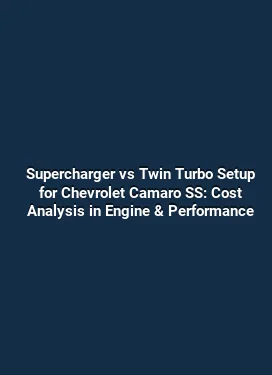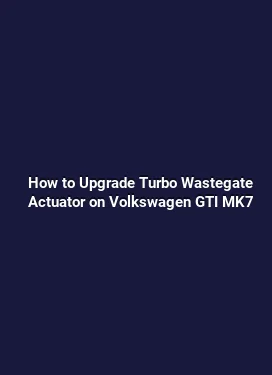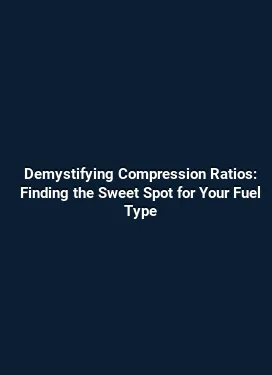How to Fix Turbo Boost Leak on Subaru WRX 2015-2021: Complete Guide
Understanding Turbo Boost Leaks in the Subaru WRX

Turbo boost leaks disrupt the path of charged air from the turbocharger to the intake manifold, causing a drop in effective boost pressure and a reduction in engine responsiveness. In the WRX lineup from 2015 through 2021, the FA20DIT engine relies on a compact but complex network of intercooler piping, silicone hoses, and clamps that channel compressed air from the turbocharger to the intake. When any connection in this network develops a leak, the turbo must work harder to maintain the same boost level, which can lead to higher operating temperatures, uneven cylinder charging, and in some cases, drive-ability concerns such as hesitation or unexpected surge. The leak source can be as simple as a loose clamp or as involved as a cracked intercooler end tank, so a systematic approach is essential for accurate diagnosis and a lasting repair.
In practice, boost leaks often originate in the intake tract near the intercooler, but they can appear anywhere along the path from the turbo outlet to the intake manifold. A leak that allows air to escape before entering the combustion chamber reduces actual boost pressure while the ECU attempts to compensate, which may manifest as a lower than expected surge threshold and irregular boost curves on data logs. For owners of 2015-2021 WRX models, recognizing the typical leakage points and adopting a methodical diagnostic workflow is key to restoring peak performance without unnecessary part replacement.
Common Symptoms and Diagnosing a Leak

Visible symptoms include a distinct hissing or whooshing sound when the engine is under boost, especially during acceleration or during rapid throttle changes. A gradual loss of boost pressure is another telltale sign, often accompanied by slower spool time and reduced mid-range torque. On many WRX models, a persistent boost leak can also trigger fuel trims that push the engine toward a lean condition, which may be evident in long-term fuel trim data or misfires at high load.
Diagnosis combines both sensory observation and methodical testing. A visual inspection is the first step: look for cracked hoses, torn silicone couplers, deteriorated end tanks, or loose clamps along the intercooler piping. Next, pressurize the intake system with a boost-leak tester or a smoke machine to observe where air escapes. A distilled-water and dish-soap solution can reveal elusive leaks by forming bubbles at the offending joint under pressurized conditions. For thoroughness, log boost pressure with a scan tool while applying WOT (wide-open throttle) on a controlled surface to compare actual boost against target values. If the leak is intermittent or occurs under specific engine temperatures, re-testing after a cooldown cycle can help pinpoint the problem more accurately.
Pre-Inspection Checklist and Tools
Before diving into disassembly, preparing the right tools and planning the workflow saves time and reduces the risk of misdiagnosis. A clean, well-lit workspace with the engine cold is ideal. A typical boost leak diagnostic setup includes a boost leak tester that fits over the intake pipe, a regulated air supply, soapy water for leak detection, and a smoke machine or DIY smoke source for visual confirmation. For the Subaru WRX, having spare clamps, replacement hoses or couplers of the correct diameter, and a torque wrench for clamps can prevent re-leaks after repair. When using pressurized air, it is crucial to avoid exceeding the system’s design pressure to prevent damage to hoses or the intercooler itself.
Essential Tools and Safety Precautions
Key tools to have on hand include a basic socket set, pliers, screwdrivers, a pinch-off tool if you need to temporarily hold hoses in place, hose clamps, new silicone hoses or OEM replacement parts, and a boost leak tester kit compatible with the WRX piping diameter. Safety considerations are paramount: disconnect the battery if you’re doing work near electrical components, allow the engine to cool completely, and never pressurize the intake system beyond manufacturer guidelines. When applying pressure during testing, use a regulator to maintain a safe, moderate pressure (generally not exceeding 25 psi) and monitor for any sudden changes in the system. A clean inventory of potential leak points—intercooler piping, T-pieces, vacuum lines, and the PCV hose network—helps streamline the process and reduces guesswork.
Step-by-Step Fixing Process
Fixing a turbo boost leak is a methodical procedure that starts with locating the exact source and ends with verification that the system holds pressure under load. The following workflow is designed to minimize unnecessary disassembly while maximizing the likelihood of a lasting repair. After each fix, re-test the system to confirm the leak is gone and that the engine responds normally to throttle input.
Systematically Inspect Intercooler Piping and Clamps
Begin with a meticulous exterior inspection of all intercooler piping segments and silicone couplers. Look for visible cracks, abrasion marks, or oil residue that could indicate a compromised seal. Check every hose clamp for proper tightness and corrosion; if clamps are loose or stripped, replace them with new stainless steel clamps or OEM equivalents. A quick pressurization test (around 20-25 psi) while rotating the engine by hand to check for joint movement can reveal sluggish or leaking joints. When a leak is found at a coupler, replace the hose or coupler with a compatible unit and ensure the clamps seat firmly. After replacements, reapply the leak test and look for a steady, bubble-free seal under pressure.
Inspect Turbocharger and Outlet Pipes for Cracks
The turbocharger outlet pipe and the immediate downstream elbow or Y-pipe are common failure points due to heat cycling and vibration. Inspect the flanges for scoring, pitting, or warped surfaces that can prevent a proper seal. A small crack at the end tank, a compromised O-ring, or a damaged gasket between the turbo outlet and the intercooler piping can cause a persistent leak even if the rest of the system looks intact. If a flaw is detected on the turbo outlet or the connecting flange, assess whether replacing the component or applying a high-quality gasket sealant is appropriate for your model year and the specific part. After any replacement, retorque fasteners to manufacturer-recommended specs and re-run the pressure test to validate the repair.
Perform a Smoke Test or Pressure Test to Confirm the Leak
Smoke testing is one of the most reliable methods to confirm a leak path that isn’t obvious. With the MAF sensor temporarily removed or disabled as per service guidance, introduce smoke into the intake system and observe where it escapes. A successful test shows the absence of smoke leakage, indicating a sealed system. If smoke is visible at a joint, disassemble, reseal, and reassemble the connection before re-testing. For a cost-effective approach, a shop-grade boost leak tester can be rented or purchased; combined with a regulated air source, this method helps pinpoint even tiny leaks that soap testing might miss. After confirming the seal, it is prudent to perform a final test drive to observe real-world behavior under load and ensure the system maintains boost during spirited acceleration.
Common Repairs and When to Replace Components
Not every boost leak necessitates a full prevention recircuit. Some leaks are easily addressed with hardware upgrades, while others require component replacement. Replacing worn hoses, upgrading clamps, and selecting quality replacement sleeves can often restore integrity without a full intercooler system overhaul. In cases of recurring leaks or aged components, it may be prudent to consider replacing damaged intercooler piping, end tanks, or the turbo outlet hose. The aim is to restore a tight, vibration-free air path that holds boost under high-load conditions and does not introduce new leaks due to hastily chosen parts.
Replacing Intercooler Piping and Silicone Couplers
Replacing worn hoses and couplers is a common and effective repair. When selecting replacements, choose hoses with the same inner diameter as the stock parts and ensure the wall thickness can withstand boost pressures without collapsing. Use high-quality clamps, preferably spring-loaded or Oetiker-style, and avoid cheap, rigid clamps that may cut into the silicone over time. Reinstall the piping with even, symmetric clamps and verify no contact with hot surfaces. After reassembly, perform a leak test again to confirm the fixes hold under pressure and under engine load.
Replacing Turbo Hoses and Clamps
If the turbo-to-intercooler hoses show signs of degradation, cracking, or crumbling under touch, replacement is advisable. This is especially true for age-related wear that often accompanies higher-mileage WRX models. Choose hoses rated for automotive turbo applications, confirm the correct diameter, and re-seal all joints with fresh clamps. After installation, carry out a pressure check to verify there are no residual leaks and monitor the system during a controlled acceleration to ensure stable boost delivery.
Post-Repair Verification and Maintenance to Prevent Future Leaks
Once the repair is complete, a thorough verification process ensures that the fix endures. Start with a static pressure test to confirm no leaks at rest, followed by a dynamic test during a controlled road load. Pay attention to boost response under varying throttle positions and RPM ranges to confirm consistent charging pressure. Regular inspection of the intercooler piping, vacuum lines, and PCV hoses as part of routine maintenance helps catch wear before a confirmed leak develops. If the vehicle has a higher mileage, scheduling periodic checks after major service campaigns or winter driving can prevent minor issues from escalating into more significant leaks.
Increasing reliability also comes from correct reassembly and torque accuracy. Always recheck fasteners after the first heat cycle and perform a final test drive to ensure everything remains tight and there are no new signs of air escaping. Smart maintenance and proactive inspection are the best insurance against recurring boost leaks and preserve the WRX’s characteristic throttle response and performance.






